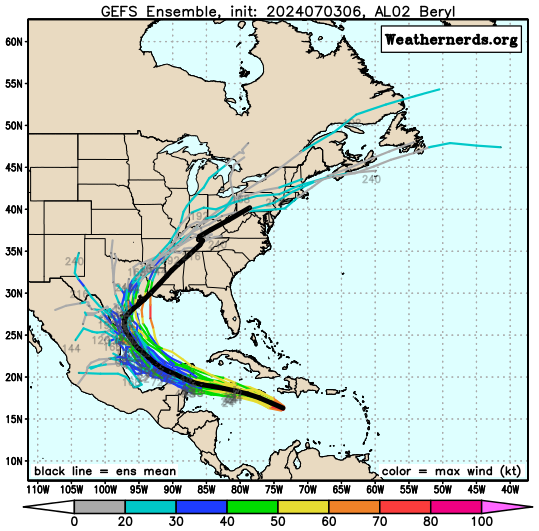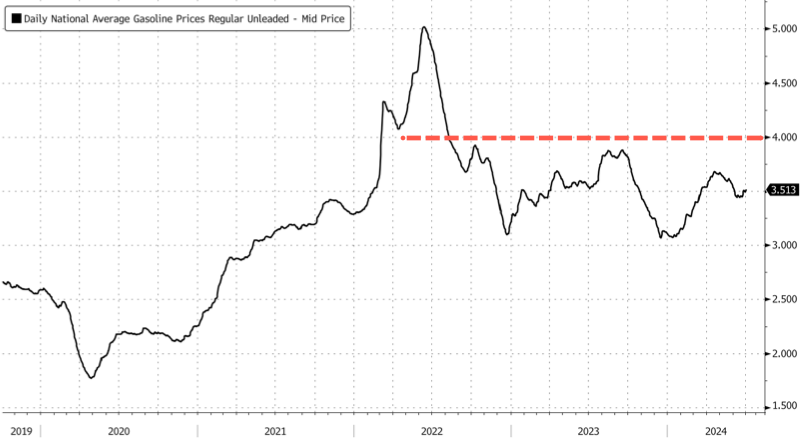Cat 4 Hurricane Beryl Heads Towards Texas, Threatening Major Oil Refineries
The National Oceanic and Atmospheric Administration’s (NOAA) National Hurricane Center (NHC) downgraded Hurricane Beryl to a Category 4 storm from a Category 5 on the Saffir-Simpson Hurricane Wind Scale on Wednesday morning. Beryl is the earliest hurricane on record to strengthen into a Category 5 as it churns across the southeastern Caribbean Sea. It is forecasted to hit the Yucatán Peninsula on Friday and afterward poses a threat to US oil and energy critical infrastructure on the Gulf Coast.
NHC said Beryl’s winds peaked at about 157 mph before weakening to 145 mph on Wednesday morning. Government weather forecasters expect “some weakening” of the storm over the “next day or two,” however, it will still be a “major hurricane” as it impacts “Jamaica on Wednesday and the Cayman Islands.”
On Wednesday, Mexico’s Meteorological Service posted a hurricane warning for the coast of the Yucatán peninsula from Puerto Costa Maya to Cancún, with forecasted landfall on Friday.
After the Yucatán Peninsula, Beryl’s forecasted path heads directly to the Texas coast and is expected to move up towards Louisiana. This area is home to major US oil and gas refineries.
Ahead of the storm, Shell announced Wednesday that it paused some drilling operations in the Gulf of Mexico. Here’s more from Bloomberg:
- Company also began evacuating non-essential personnel as precautionary measure
- Shell is also evacuating non-essential staff from the Whale asset, which is not scheduled to begin operations until later this year
- Production from the Shell-operated Perdido platform feeds into the HOOPS Blend, a medium sour oil with 29.2 API and 1.55% sulfur
- Oil from Perdido is delivered by the Hoover Offshore Oil Pipeline System (HOOPS) to the Quintana terminal, south of Freeport, Texas; from Quintana oil flows into the Houston refining hub but mainly to the Texas City area
“There remains uncertainty in the track and intensity forecast of Beryl over the western Gulf of Mexico this weekend. Interests in the western Gulf of Mexico, including southern Texas, should monitor the progress of Beryl,” NHC wrote in the most recent update.
Computer models show the storm’s future path along the Texas coast, which is home to 32 oil refineries. Refineries are critical for processing crude into products such as gasoline and diesel.
“We have to wait and see where it lands,” Mark Schieldrop, a spokesperson for the travel club AAA Northeast, told newspaper The Record.
Schieldrop said, “But if the storm makes a direct hit to oil and gas infrastructure, it could cause prices to go up here if refineries down there are knocked offline for more than a few days.”
At the start of hurricane season, we penned a note titled “La Nina Will Complicate Things For Biden Ahead Of Elections As Hurricanes Threaten Oil Refineries,” and that’s exactly what could happen next week.
All it takes is one major hurricane to disrupt major US Gulf Coast refineries, which could drive average gasoline prices at the pump to the politically sensitive level of $4 a gallon.
Currently, AAA average prices of gas at the pump stand at…
If Beryl causes refinery closures on the US Gulf Coast, the Biden team will have a whole lot more issues to deal with (currently, it’s just chaos in Washington: “”No One Is Pushing Me Out” Biden Tells Staff As New NYT Poll Shows Trump Lead Widening”).



